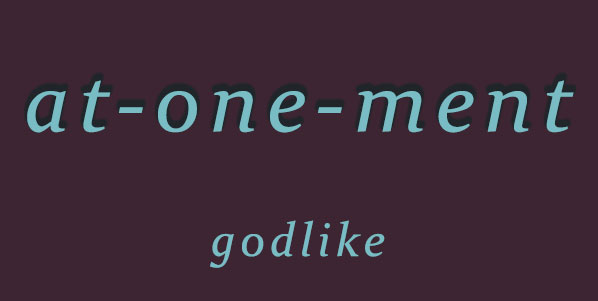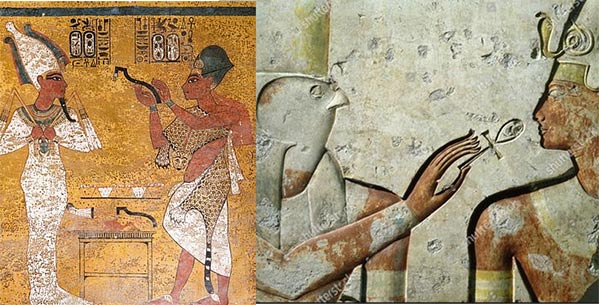In “human identity – divinity” we cemented the connection between image (tselem) in Genesis 1 and cult statues or idols. To the people of the aNE (ancient near east) an idol was the living embodiment of their god, and not just a physical thing like a statue in the local park. To them it was not only alive, and in it their god was fully present to them. If you think about it this sheds light on the way humans could worship idols them and lavish care on them. Clearly, the understanding of the writers of genesis was very different to ours.

In order to take on the full, repeated presence of the god the statue had to undergo a process of ‘vivification’ which bought it to life. There are many examples of this transformational process, such as the “Mouth washing or Mouth-Opening” rituals. Although there were differences in how these ceremonies were performed across the region and over time, they could be considered as having three stages – purification, vivification and enthronement. In Egypt the ceremony was seen as bringing to life all the statue’s internal organs and Akkadian texts describe how the statue cannot perform the usual necessities of life without the opening or the mouth ritual. [1]
Bringing Adam to Life
There is no obvious parallel in Genesis 1. Despite this commentators have suggested that the style and content of Gen 1:26-28 has much in common with other ceremonies (ie spells!) from nearby cultures, and that a well used blessing formula is similarly co-opted into the Genesis 1 account. Blessings were not just empty speech, but carried the transference of power and destiny (cf Gen 27 – Jacob blessing his sons as just one example). This blessing acts to bring about the intended change in the sacred status of an image. So we have a picture of God, who has the required power and status, speaking words intended to change the power and status of his creation – Humankind. In other words, we have a “Transformation ritual”. Adam and Eve become, as it were, extensions of Yahweh Elohim’s presence. [2]
If this seems a little subtle it may be time to try & “Think like a Hebrew” as there references disappear to us. Somewhat more obvious to us is the reference Gen 2:7 where we read:
then the Lord God formed the man of dust from the ground and breathed into his nostrils the breath of life, and the man became a living creature
We see what must surely be the Hebrew version of this ceremony. Yahweh breathes into the nostrils of the “man of dust” and he comes to life. No spell required! No special tools, just the breath of life. Once again the writer is exalting Yahweh above other gods, writing clearly in polemic style to refute the claims or the surrounding cults. Adam is now the image / idol of Yahweh. Just as the idol was considered to carry the full embodiment of the deity so Adam did something similar for Yahweh. [3] Only of course, the cult statues of the Egyptians and Akkadians weren’t really-living and animated like Adam. So which god is real then?

Humans are more than just royal representatives. They carry “God’s DNA” as Fletcher-Louis describes it.[4] The royal representation flows from this DNA. Humanity is of supreme value and status. Only Yahweh can do this. And from this flows an important consideration.
God’s image idol …. but not God
It is clear that we are divine. This is “dangerous” teaching because it can be seen as saying that pre-fall humanity was equal to God. This is not the case. We are in his nature, but we are not him. We are not without beginning. We are not all powerful, and neither were Adam & Eve. Perhaps ever more important, we are the creature while he is the creator. He is GOD and we are gods. We are ‘small d’ divine.
As I said in part 3 I wondered if I had joined a cult when I first heard humans beings described as “divine” like this. It was pointed out though that the Orthodox church has always had a teaching around the idea of “theosis” which is the divinization of the human, and became the focus of much study for me. So this is nothing new; rather it is something old that has drifted off the radar over the centuries (at least in the Western Church) but which is making a challenging and welcome return.
Next we begin to look at what the fall narrative really says.
References and Notes
- Matson, Joshua M. “Idol Remains: Remnants of the Opening of the Mouth Ritual in the Hebrew Bible.” Studia Antiqua 12, no. 1
(2013). https://scholarsarchive.byu.edu/studiaantiqua/vol12/iss1/3 , 37. - S L Herring, ‘A “Transubstantiated” Humanity: The Relationship between the Divine Image and the Presence of God in Genesis I 26 VT 58 (2008) p490‐491
- Both images show the opening of the mouth ceremony for a dead Pharaoh for his after-life. The ceremony was also carried out as described to bring life into an idol.
- Lecture discussion with Crispin Fletcher-Louis at Westminster Theological College, 2012.



